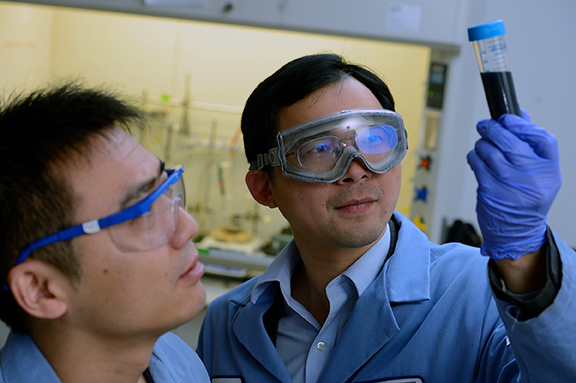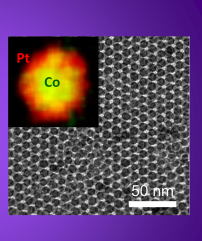Cue from Ancient Egyptians, Scientists Develop Sustainable Fuel Cells
Think about Egypt, and all these images of mummies crawling out of dimly-lit pyramids come to mind (Oh, thanks Hollywood!). But Egypt in reality is a land of fascinating pyramids and pharaohs, tombs filled with glittering treasures, and powerful men who ruled a country like gods. When we think of ancient Egypt, we think of the wealth and glamour of kings- but not many know that Egyptian artists at the time of King Tutankhamun often covered cheaper metals (copper, for instance) with a thin layer of a gleaming precious metal such as gold to create extravagant masks and jewellery.
And now, in order to improve fuel-cell technology, a team led by Johns Hopkins engineers took a cue from ancient Egyptian artists who applied a thin coating of expensive gold over less expensive materials on creations like this death mask for King Tut.
“This technique could accelerate our launch out of the fossil-fuel era,” says Chao Wang, an assistant professor of chemical and biomolecular engineering at Johns Hopkins University and senior author of the study.
“It will not only reduce the cost of fuel cells,” Wang says. “It will also improve the energy efficiency and power performance of clean electric vehicles powered by hydrogen.
”Applying a tiny coating of costly platinum just 1 nanometer thick—about 1/100,000th the width of a human hair—to a core of much cheaper cobalt could bring down the cost of fuel cells.
This microscopic marriage could become a crucial catalyst in new fuel cells that use generates electricity from hydrogen fuel to power cars and other machines. The new fuel cell design would require far less platinum, a very rare metal that sold for almost $900 an ounce the day this article was produced.

Earlier attempts to plate precious metals on non-precious materials were largely stymied by galvanic replacement reactions—oxidation of the non-precious metal. In this study, the team successfully suppressed such reactions by introducing carbon monoxide, a gas molecule that strongly binds to cobalt, protecting it from oxidation.
“There’s a lot more cobalt out there than platinum,” said lead author and Johns Hopkins post-doctoral fellow Lei Wang (not related to Chao Wang). “We’ve been able to significantly stretch the benefits of platinum by coating it over cobalt, and we even managed to enhance the activity of platinum at the same time.”

Not only did the cobalt-platinum nanoparticles reduce the usage of platinum; they performed almost 10 times better than platinum alone. The researchers said this enhanced catalytic activity resulted from both the maximized exposure of platinum atoms on the surface and from interactions between the two metals. “The intimate contact between cobalt and platinum gives rise to compressive strain,” Lei Wang said. “It shortens the distance between platinum atoms and makes the chemical reactions more feasible on the surface.”
Currently, the team is working on adapting their technique to other precious metals and non-precious substrates. New developments will target further applications of such materials in chemical conversions of hydrocarbons.
“Many reactions that depends on precious metal catalysts could be rendered cheaper and more effective by taking advantage of our technology,” Chao Wang said. “At a time when we are becoming painfully aware of the limits of our non-renewable sources of energy and materials, this technique points us in a very welcome new direction.”































